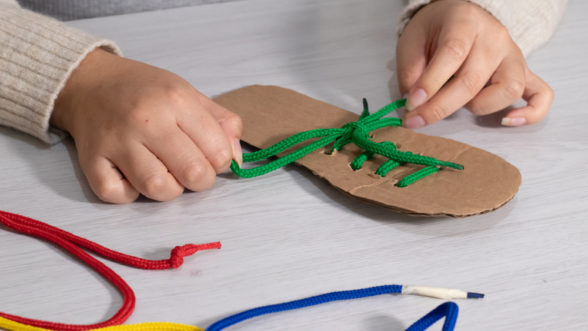
Education, Useful tools
Education
02 March, 2021

One of the most important factors for success at school is a well-developed concentration span. Those who struggle to focus can miss out on learning opportunities, fall behind and enjoy school less.
Like with many things, building skills early in life is easier than playing catch up later. Concentration is the same – it’s like a muscle that requires exercise to strengthen and maintain performance.
It may seem counter-intuitive but the work we do in our Active Early Learning curriculum is designed to help children develop their concentration skills both during a session but also for when they aren’t being physically active. How does it achieve that?
Firstly, by using games to develop skills. Games work the concentration muscle from multiple perspectives including requiring children to listen and understand how the game works, for team-based games they need to pay attention to how everyone else is working and engage until the end, and lastly through learning new gross and fine motor coordination skills.
Secondly, at the end of a physical literacy session the children feel both energised and calm, meaning they are well positioned for concentration in their next activity.
You might have heard of or seen primary school teachers taking children out of the classroom for 10 minute breaks of vigorous play – they do this because it’s an effective way to create a mental break between class activities.
The same applies to us. When we sit in front of a computer for hours our ability to concentrate declines and we need to do things to recharge – even something as simple as a quick wander around the house/office helps the mind to engage again.
It’s really simple – encourage your children to be active via regular free play, especially outdoors.
When that’s not practical there are things you can do in the house to help them burn off energy and reset. These can include things like doing active movements in breaks between activities.
For example, you could draw up some cards of different ocean-themed movements and pick them at random to do in the hallway. Think waddle like a penguin, clap like a seal, walk like a crab and jump like a dolphin.
You could make this part of a treasure hunt to extend the active play into a longer activity and work that concentration muscle even harder!
We use ‘snack’ cards in our physical literacy program to describe and choose short active transition activities so you can also ask your which their favourites are.
Alternatively, you could adopt the PE instructor approach – 10 star jumps before snack, 10 high knees before screen time etc!
Don’t think of working on concentration as a chore to be done – just mentor that being active is fun and get creative about building it into the day – concentration will follow.
Find out more about the Active Early Learning curriculum!